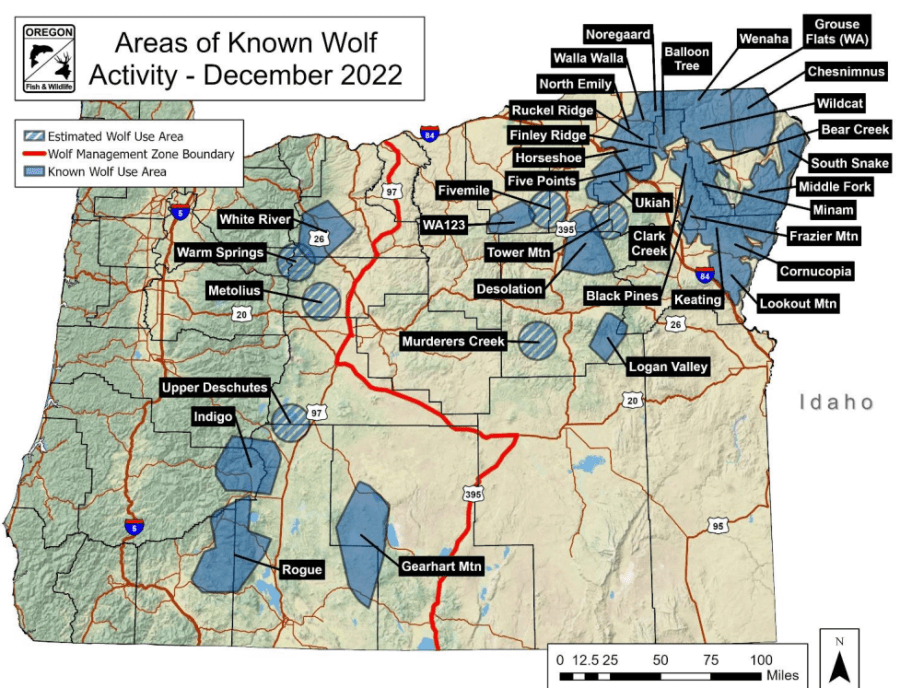PORTLAND, Ore. (KOIN) — “High levels” of legal and illegal wolf killings by humans have delayed the growth of Oregon’s wolf population, the wildlife protection group Center for Biological Diversity said in response to the Oregon Department of Fish and Wildlife’s 2022 annual Oregon Wolf Conservation and Management report.
According to the report, Oregon’s known number of gray wolves increased from 175 to 178 between 2021 and 2022, an increase of three. In the organization’s April 18 response, CBD senior wolf advocate Amaroq Weiss called the stunted growth a “tragedy.”
“The past few years have been filled with tragedy for Oregon’s wolves,” Weiss said. “I urge the department to rethink how often it resorts to killing wolves and focus more on nonlethal approaches and stopping poaching.”
In 2022, humans were responsible for at least 17 wolf deaths in the state of Oregon, the report states. Six wolves were executed due to repeat livestock killings and one was legally killed by a shepherd under the state’s “Caught-in-the-Act Lethal Take” rule. Two were also fatally hit by vehicles.

Another seven wolves were killed illegally in 2022, including a 1-year-old, radio-collared wolf that was shot to death in July by a man in Wheeler County who claimed that he thought the wolf was a coyote.
“One of the poached wolves was killed in the area of Oregon where wolves are still fully protected under the federal Endangered Species Act,” the CBD said in response to the killing. “The individual who killed the wolf thought the animal was a coyote, turned himself in and was fined only $1,453 for killing a federally endangered wolf.”
As a result of the year-after-year killings, the state’s wolf population has slowly increased by about 1% in the last 7 years, the CBD said.
“This marks the sixth straight year that growth was well below the 30% expected for a wolf population still in the early stages of recovery,” the CBD stated. “The annual growth rate for Oregon’s wolves over the past seven years has averaged only around 7.2%.”

Oregon farmers, meanwhile, continue to see an increase in wolf-related livestock deaths. The ODFW report states that the agency completed 121 investigations of dead or injured livestock that were suspected to be attacked by wolves. Of the 121 incidents, 76 were confirmed to be caused by wolves. The depredation number has steadily increased in the past three years, with 49 incidents recorded in 2021 and 31 in 2020.
“Consistent with the ‘Wolf Plan,’ livestock producers implemented non-lethal measures to minimize depredation prior to any department approval of wolf lethal removal,” the ODFW said.

While the ODFW has outlined in its “Wolf Plan” that it aims to facilitate the conservation and management needs of the state’s growing population, while also appeasing the concerns of local farmers, the CBD said that the ODFW is falling short of its expectations.
“Oregon’s state wolf plan is supposed to be adaptive to changing circumstances, but this report shows it’s falling flat,” Weiss said. “The stagnating recovery is a signal to the department to take a good, hard look at what changes are needed to get these incredible animals back on an upward trajectory.”
